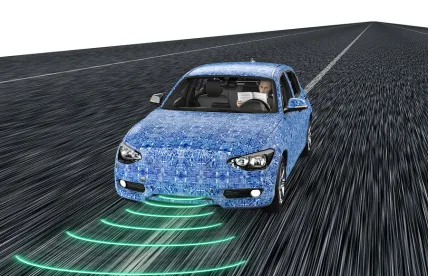With the prevalence and advancements of autonomous vehicles continuously gaining traction, many are left wondering what this will mean for society as a whole, including changes to infrastructure and how we interact with our vehicles. Indeed, many questions remain unanswered, such as the price of autonomous vehicles, the level of driver involvement (and whether a driver will even be required to be present), and how companies will utilize such vehicles. In addition, with Uber’s well-publicized fatal crash in March of this year, consumers are left skeptical of whether the technology and safety of autonomous vehicles will be deemed sufficient to risk the shift from conventional vehicles when the time comes. In the wake of this accident, a study completed by Allianz found that 43% of Americans are interested in using self-driving cars, marking a 10% drop from 2017 to 2018. While the study did not necessarily test for causation between the accident and consumer sentiments, the drop in interest still represents rising weariness about the new technology.
Even so, the technological checklist for developing autonomous vehicles is outpacing the regulatory and infrastructure preparedness for the technology. For example, while earlier this month the Department of Transportation (DOT) rolled out a new automated vehicle policy, many questions and requirements remain largely untouched. Untouched topics include insurance, which includes questions of liability and driver responsibility with regard to autonomous vehicles, and what impact this technology might have on the auto insurance industry as a whole, in particular covering vehicle damage in states where fault during an accident controls which insurance provider pays for repairs.
One primary conundrum to decipher is, in the event of a collision caused by an autonomous vehicle, who is at fault? One answer could be the owner of the vehicle. In a ridesharing platform in which a fleet of vehicles are owned by a large entity, insurance risk may be aggregated across the fleet and the entity may even have the flexibility to self-insure. General Motors has already shown us this year that self-insurance for healthcare may help drive down costs, and if allowed to from an insurance regulation standpoint, may reap the benefits taking a similar approach much closer to home.
Another answer to the liability question may center around the driver. In the rental car industry, even though the vehicles are part of an entity-owned fleet, the insurance liability still falls on the renter. Again, GM is currently experimenting with integrating insurance into a rental with its Maven program, but the standard across the rental industry still places responsibility on the driver. As the driver is gradually removed from the driving equation, it will be an open question if liability continues to rest with the user for legacy reasons, or if regulations will step in to shift responsibility. Further, it is not unfathomable that a user may still be held responsible even if the vehicle itself is at fault, as Michigan’s no-fault insurance already ignores accident responsibility and directs liability to both of the drivers anyway. It is just one simple step away to say that not only do we not care who is at fault, but we further do not care who or what was behind the proverbial “wheel.” In other words, holding the user responsible is just a cost of doing business.
If liability does not rest with the owner or the operator, then one more place we can look is the manufacturer. Volvo, Google, and Mercedes Benz have previously indicated that they will accept liability for their cars. This is the approach that Europeans countries are seemingly leaning toward adopting. However, even this representative list of companies raises the question of who along the supply chain remains ultimately responsible: is it the manufacturer of the vehicle, the software developer, a sensor manufacturer? We know that drivers make mistakes all the time and are almost always the cause of accidents and therefore do not dive all too often into product liability in most fender benders. However, we also have the expectations that autonomous vehicles should work correctly 100% of the time and therefore do not prescribe the same level of leniency to autonomous vehicles. Unlike an accident on your morning commute, when Apple’s self-driving car gets into a fender bender, it picks up national headlines. The heightened scrutiny and expectations of perfection will likely lead to higher damages when autonomous accidents do occur, at which point we should expect to witness a lot more finger pointing between all the system providers in an at-fault vehicle to deflect blame and stave off follow-on litigation by enterprising individuals. As manufacturers introduce vehicles with different levels of autonomy, we should also expect that liability will shift more toward the software side of the equation as more controls are relinquished from the driver and the hardware, to the “brain” driving the vehicle.
In the short run, while the DOT is still silent regarding many of the liability questions, we will likely see a “Laboratory of Democracy” with a continued patchwork of state, local, and federal guidelines, constantly trailing the ever-evolving self-driving technology. In the long run, your guess is as good as mine.



 />i
/>i

